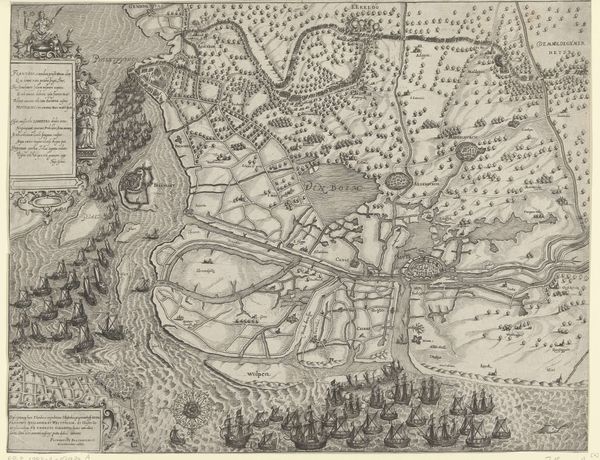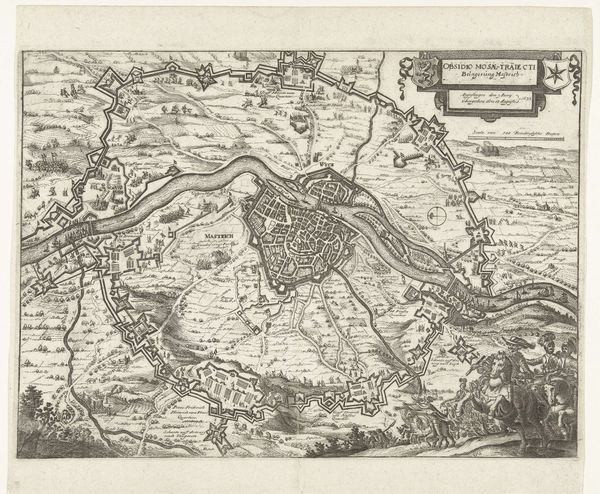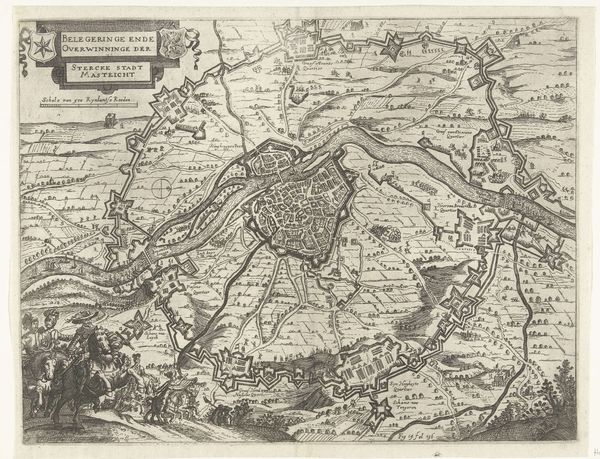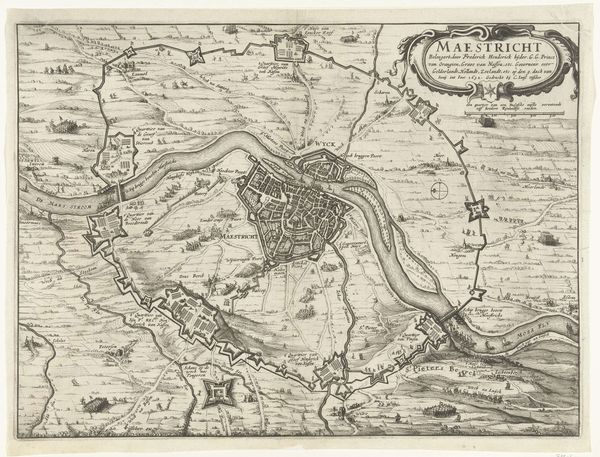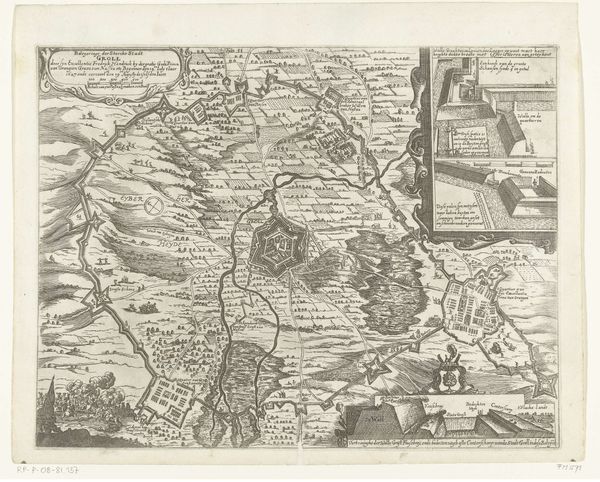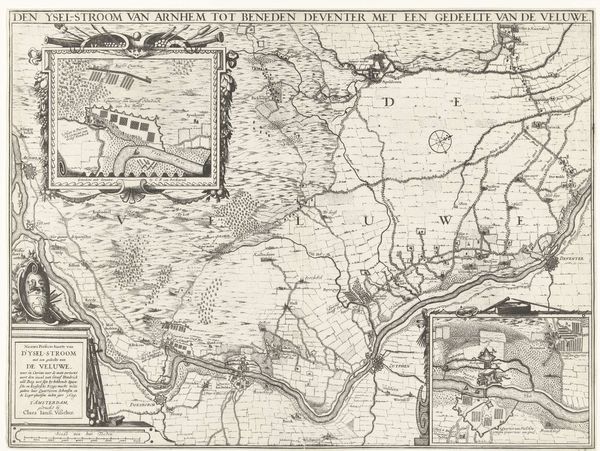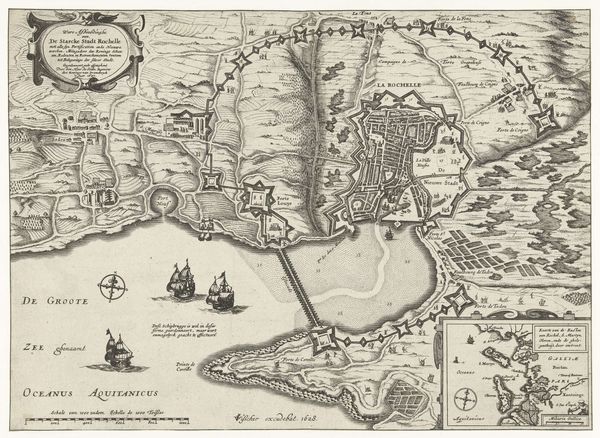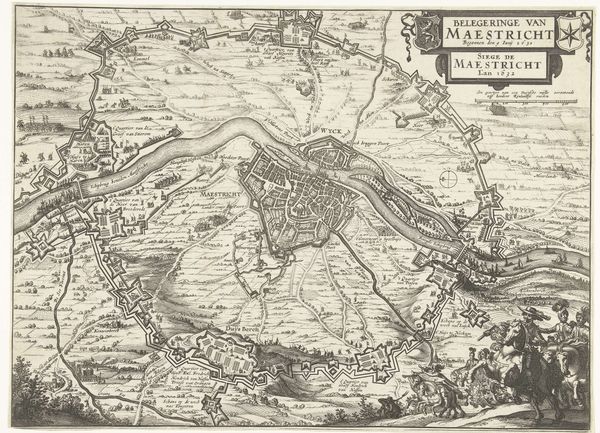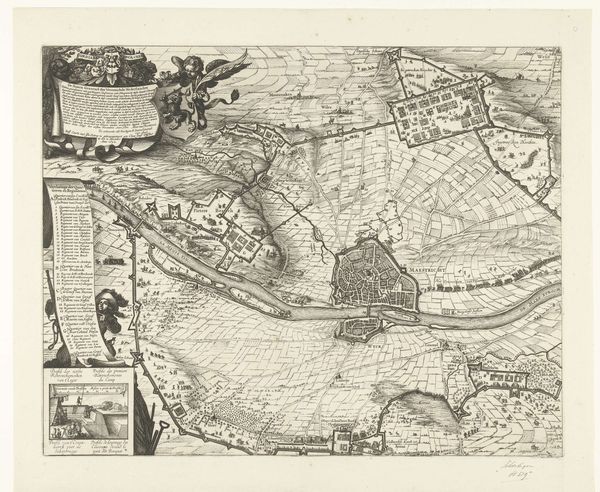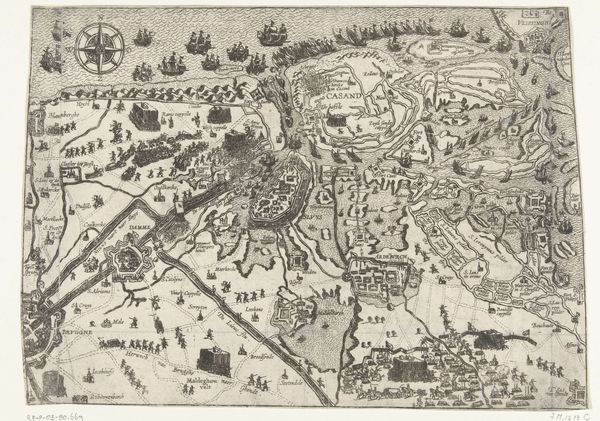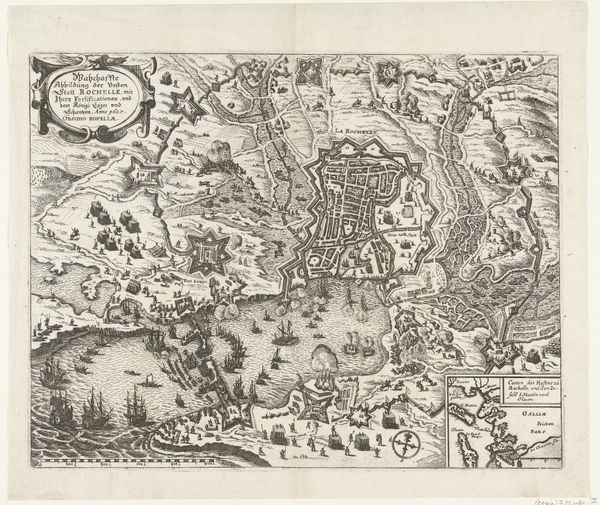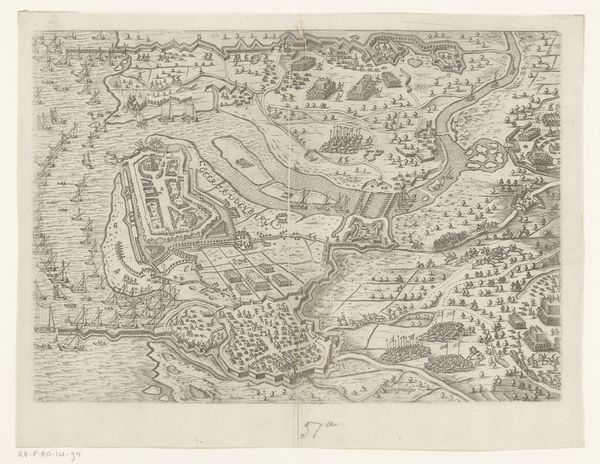
drawing, print, etching, ink
#
drawing
#
dutch-golden-age
# print
#
etching
#
landscape
#
ink line art
#
ink
#
geometric
#
line
#
cityscape
#
history-painting
#
realism
Dimensions: height 369 mm, width 483 mm
Copyright: Rijks Museum: Open Domain
Curator: As you stand here, you’re looking at a print titled "Beleg van Breda," or "Siege of Breda," created around 1637 by Pieter Hendricksz. Schut. It's currently housed at the Rijksmuseum. Editor: Immediately, I’m struck by the intricacy. The lines are so delicate, creating a dense tapestry across the entire surface. It feels almost like a living organism. Curator: Absolutely. Schut’s detailed etching provides not just a depiction, but a statement about the geo-political situation. The siege itself was a significant event in the Eighty Years' War, marking a strategic victory for the Dutch against Spanish forces. This image wasn't just about geography, it was a piece of political propaganda. Editor: From a purely formal perspective, the balance is fascinating. The tight linework gives a wonderful graphic quality and there is a nice combination of aerial views with these low vantage points across the landscape, drawing the eye across the landscape in a really pleasing fashion. Curator: Right. Consider also how prints like this were distributed. They played a role in shaping public opinion. The details that the artist chose to highlight tell us about the power structures, like the depiction of the different troop movements to signal how important strategy and control were in this conflict. Editor: Yes, and I wonder if we can even talk about symbolism through geometry here? The almost perfect grid of the fortification itself contrasts so sharply with the undulating rivers. Was it done intentionally? Perhaps that interplay creates an additional sense of tension? Curator: A key thing to consider, perhaps lost to us now, is how the visual culture of the time might have responded to the formal arrangement of the map. Viewers were far more engaged with events such as the Siege. It spoke directly to an imagined geography that defined ‘Dutchness.’ Editor: In essence, you're saying that, even in its fine lines and geometric patterns, the print operates as a narrative. Curator: Exactly. A narrative carefully crafted to reinforce the legitimacy and strength of the Dutch Republic. Editor: A fresh encounter for me—an almost meditative experience. It's fascinating how what initially appears as a dry record speaks to deep-seated beliefs about territory and order. Curator: It shows us how art can transcend mere representation, becoming a tool of social and political shaping of cultural memories.
Comments
No comments
Be the first to comment and join the conversation on the ultimate creative platform.
